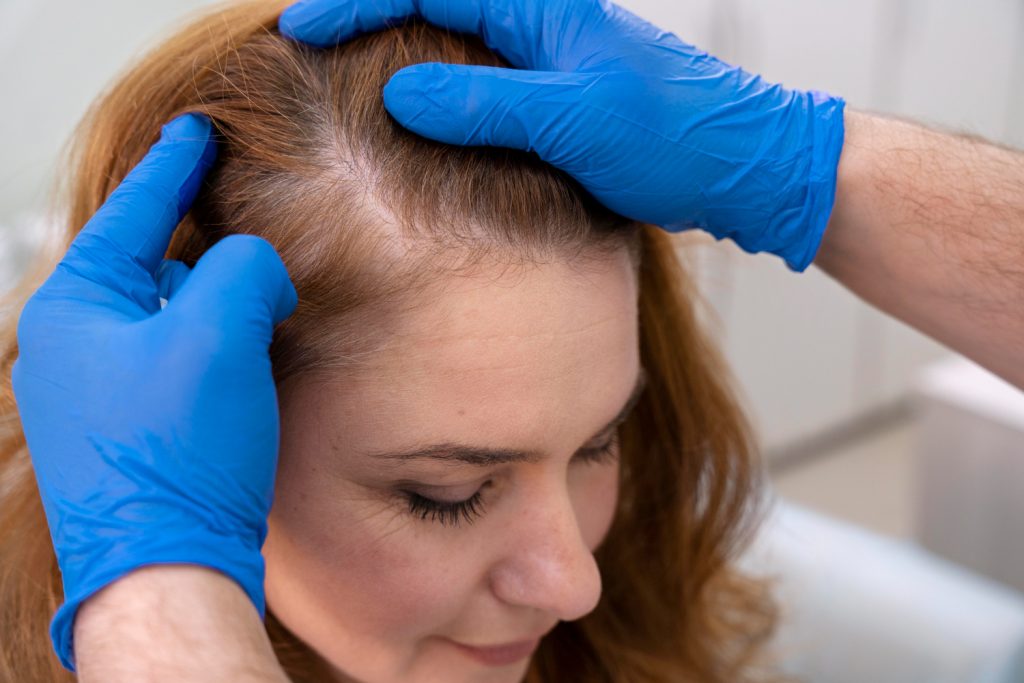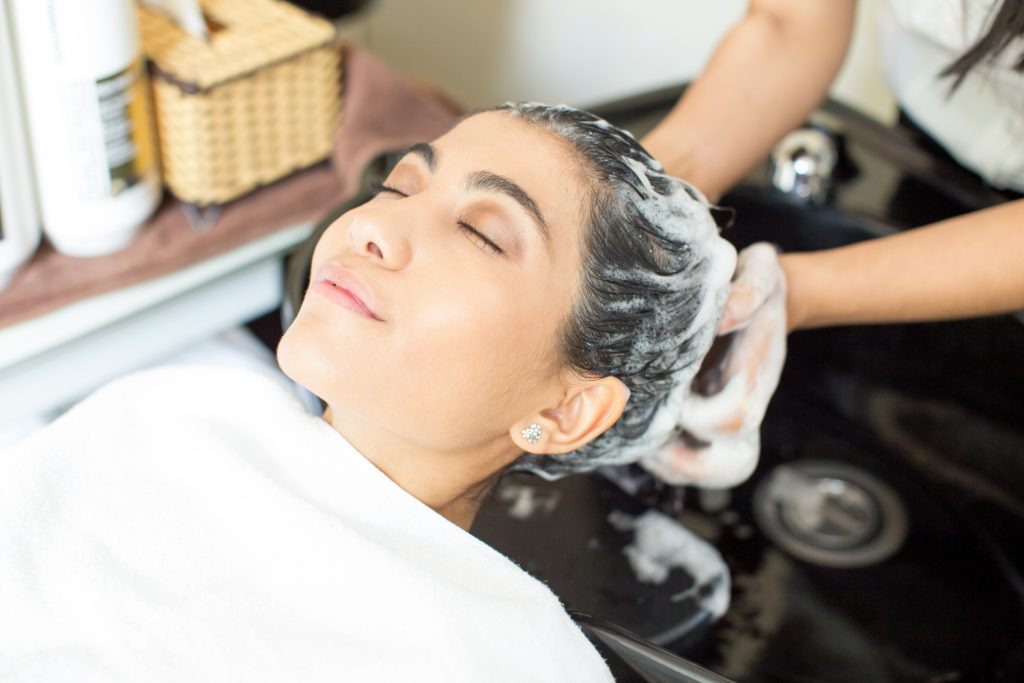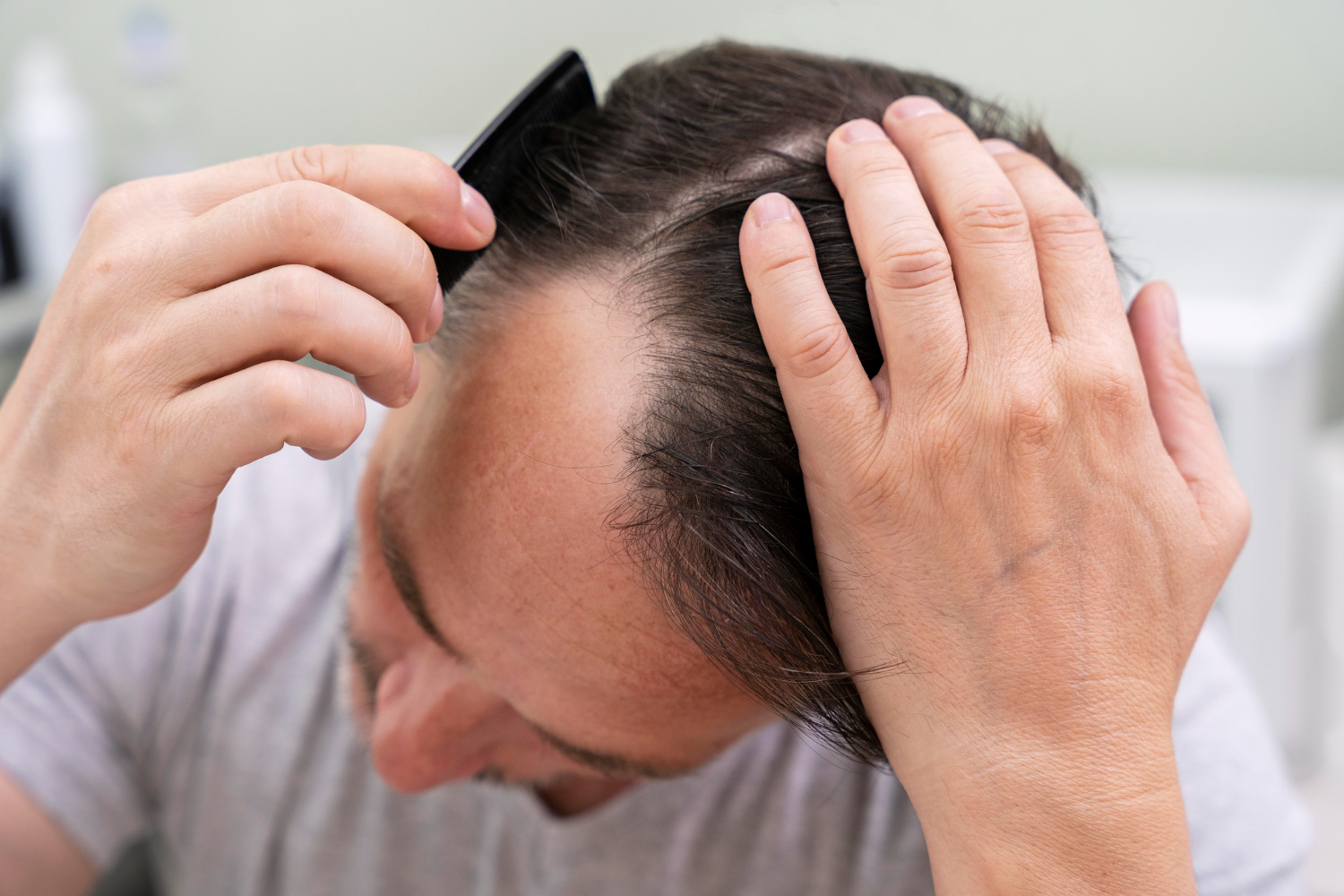That Itchy, Flaky Feeling: Why Is My Scalp So Angry?
Let’s be real. There are few things more annoying—or more embarrassing—than a scalp that just won’t quit. You’re constantly itching, you’re checking your shoulders for that telltale “snow,” and you’re starting to wonder what on earth is going on up there. Is your scalp just incredibly thirsty? Or is it something… more?
Welcome to the great scalp debate: Am I dealing with a simple dry scalp, or is this scalp psoriasis? It’s a super common question, and honestly, it’s easy to get them mixed up. They both itch, they both flake, and they both make you want to hide under a hat. Let’s explore the differences in detail with a focus on Scalp Psoriasis vs. Dry Scalp.
But here’s the thing: they are fundamentally different conditions. Think of it like this: a dry scalp is like a thirsty plant that just needs some water. Scalp psoriasis, on the other hand, is like a factory that’s gone into overdrive, producing way too much, way too fast. One is an external problem (dryness), and the other is an internal one (an autoimmune response).
So, how do you play detective and figure out which one is crashing your party? Let’s break it down, step by step, so you can finally get some relief.
Understanding the nuances between Scalp Psoriasis vs. Dry Scalp is crucial for effective treatment.
Understanding Suspect #1: The Common Dry Scalp
This is, by far, the most common culprit. A dry scalp is exactly what it sounds like—it’s skin that lacks moisture. It’s the same thing that happens to your hands in a cold, dry room or your legs after a long, hot shower. Your scalp is skin, after all!
What’s Making My Scalp So Thirsty?
Usually, a dry scalp is a reaction to something in your environment or routine. The main offenders include:
- Cold, dry air: Winter weather (or just blasting the air-conditioning) is famous for sucking moisture out of everything, including your scalp.
- Harsh shampoos: Those shampoos that give you a “squeaky clean” feeling? They’re often full of sulfates that strip your scalp of its natural, protective oils (sebum).
- Scorching hot showers: I get it, they feel amazing. But that super-hot water is another major culprit in stripping natural oils.
- Product buildup: Piling on dry shampoo and styling products without clarifying properly can irritate the skin and mess with its moisture balance.

The Telltale Signs of a Simple Dry Scalp
If you have a dry scalp, you’ll notice:
- Small, white flakes. These are dry, lightweight, and look more like fine powder or dust.
- Itchiness. It’s definitely itchy, but it’s usually just… itchy. It’s not typically described as painful or burning.
- A “tight” feeling. Your scalp might feel tight, especially right after you wash your hair.
- The skin underneath looks normal. If you move your hair, the skin itself probably just looks… like skin. It’s not usually red or inflamed unless you’ve been scratching it raw.
Understanding Suspect #2: The Stubborn Scalp Psoriasis
Okay, now we’re talking about a completely different beast. Scalp psoriasis isn’t just dry skin; it’s a chronic autoimmune condition. This means your own immune system is mistakenly attacking healthy skin cells.
What Is Psoriasis, Really? (A Quick Body Science Lesson)
Here’s a simple analogy. Your body is supposed to make new skin cells in a nice, orderly process that takes about 3-4 weeks. The old, dead cells gently flake off at the top without you even noticing.
With psoriasis, your immune system hits the panic button and yells, “We need new skin, NOW!” This puts your skin cell production into hyperdrive, cranking out new cells in just 3-4 days. Because they’re made so fast, they’re not mature, and your body can’t shed them quickly enough. So, they just… pile up. This pile-up of dead skin cells is what creates the “plaque” or “scale” you see.
The Telltale Signs of Scalp Psoriasis
This is where the differences really start to show:
- Thick, silvery-white scales. We don’t call them “flakes” here. These are thicker, more substantial, and often have a silvery, shimmery look. They can also appear greasy or waxy.
- Raised, red patches (plaques). This is the biggest clue. Underneath those silvery scales, the skin is not normal. It’s bright red, inflamed, and distinctly raised from the surrounding healthy skin.
- Itching that burns. The itch from psoriasis is often described as more intense. It can feel like a biting, burning, or stinging sensation.
- Soreness or pain. The plaques themselves can be tender and sore to the touch.
- Bleeding. Because the plaques are inflamed and you’re scratching, they can easily crack and bleed. Finding little blood spots on your scalp or pillow is a common sign.

The Head-to-Head Showdown: Dry Scalp vs. Psoriasis
Still confused? Let’s put them side-by-side.
Difference 1: The Look and Feel of the Flakes (Scales vs. Flakes)
- Dry Scalp: Small, fine, white, and dry. They fall easily, like dust.
- Psoriasis: Large, thick, and greasy-looking. They are silvery-white and stick to the scalp and hair shafts in patches.
Difference 2: The Color of Your Scalp (Irritated vs. Inflamed)
- Dry Scalp: Your skin underneath the flakes is probably a normal color, or just a little red if you’ve been scratching.
- Psoriasis: The skin under the scales is always red, raised, and clearly defined. It looks angry.
Difference 3: The Sensation (A Simple Itch vs. Burning and Soreness)
- Dry Scalp: It’s annoying and itchy.
- Psoriasis: It’s an intense itch that often comes with a side of burning, stinging, or general soreness.
Difference 4: Location, Location, Location! (Does It Creep Past Your Hairline?)
- Dry Scalp: This problem usually stays put on your scalp.
- Psoriasis: Psoriasis loves to creep. Check your hairline. Does it extend onto your forehead? Do you have patches behind or even in your ears? How about the back of your neck? Psoriasis often crosses these boundaries. It might also show up on other parts of your body, like your elbows, knees, or back (which is a dead giveaway).
When to Stop Guessing and See a Professional
Look, I’m all for DIY, but there’s a time to call in the experts. If you’ve tried a few different anti-dandruff or hydrating shampoos and nothing has changed after a few weeks, it’s time.
Stop guessing if:
- The itch is severe or disrupting your sleep.
- Your scalp is bleeding, cracking, or feels painful.
- You’re noticing patches of hair loss in the affected areas.
- Your “flakes” look more like the silvery scales we described.
- The patches are spreading past your hairline.

Why You Might Need a Specialist Scalp Treatment in Singapore
Here’s the thing: our climate can be a wild card. You’d think the humidity in Singapore would prevent dry scalp, but constant in-and-out of powerful air-conditioning can wreak havoc on our skin’s moisture barrier. At the same time, the heat and sweat can aggravate inflammatory conditions like psoriasis.
If you’re stuck in this cycle, don’t just go to a regular hair salon. You need someone who can actually diagnose the problem. This is where a dermatologist (skin doctor) or a trichologist (a scalp and hair specialist) comes in. Booking a consultation for a professional scalp treatment in Singapore is your best bet. They have specialized tools (like micro-cameras) to look at your scalp up-close and tell you exactly what you’re dealing with. They can distinguish psoriasis from severe dandruff (seborrheic dermatitis) or a simple dry scalp, which is the crucial first step to getting the right treatment.
What Can You Actually Do About It? (Treatment Pathways)
Once you have a good idea of the culprit, the path to relief becomes much clearer.
Taming a Dry Scalp: Simple Home Remedies If you’re pretty sure it’s just a dry scalp, the fix is all about adding moisture and being gentle.
- Switch your shampoo: Look for products that are “sulfate-free” and “hydrating.”
- Turn down the heat: Lukewarm water is your friend.
- Shampoo less often: Try to stretch the time between washes to let your natural oils do their job.
- Use a scalp serum: A serum with ingredients like hyaluronic acid or tea tree oil (for mild itch) can provide direct relief.
- Get a humidifier: This is a game-changer if you sleep with the AC on full blast.
Managing Scalp Psoriasis: A Professional Approach This is not a DIY fix. Because psoriasis is an autoimmune condition, it’s about managing the symptoms, not curing it. A specialist will likely recommend:
- Medicated Shampoos: These aren’t your average Head & Shoulders. They contain active ingredients like coal tar or salicylic acid, which are designed to slow down skin cell growth and break down the scales.
- Topical Steroids: These come in foams, solutions, or creams and are applied directly to the plaques to calm the inflammation (the redness and itch).
- In-Clinic Treatments: A specialist clinic might offer treatments to gently exfoliate the scales (so the medicine can penetrate) or use light therapy (phototherapy) to slow cell growth.
Conclusion: Giving Your Scalp the Peace It Deserves
That angry, itchy scalp is trying to tell you something. Your job is to listen and figure out what it needs. Is it crying out for moisture (dry scalp), or is it sounding an inflammatory alarm (psoriasis)?
Knowing the difference between the small, white flakes of a dry scalp and the thick, silvery, red-based plaques of psoriasis is the single most important step you can take. It’s the difference between buying a hydrating conditioner and seeing a specialist for a targeted management plan.
Don’t spend another day scratching in confusion. Take a close look, be honest about your symptoms, and if you’re even a little bit unsure, get a professional opinion. Your scalp (and your black shirts) will thank you for it.





